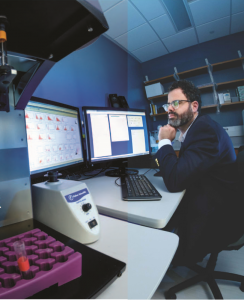Everyone knows that the human eye is made up of distinct parts and regions — the cornea, the retina, the optic nerve, and so on. It is less commonly understood, says Daniel Saban, PhD, that funding for research and treatment of eye disorders tends to be similarly divided and compartmentalized.
 That’s why a recent $500,000 gift from Miracles in Sight to Duke Eye Center to support early career faculty research into diseases and disorders of the cornea is so important. The support, Saban says, brings together two rare but critical resources: funding for corneal research and expert scientists with the knowledge and skills to make important advances.
That’s why a recent $500,000 gift from Miracles in Sight to Duke Eye Center to support early career faculty research into diseases and disorders of the cornea is so important. The support, Saban says, brings together two rare but critical resources: funding for corneal research and expert scientists with the knowledge and skills to make important advances.
“Unlike other diseases of the eye, such as age-related macular degeneration or glaucoma, very few foundational agencies support funding for ocular surface and corneal diseases,” says Saban, assistant professor of ophthalmology and assistant professor in immunology. “And very few institutions in the world have the expertise in corneal and ocular disorders that Duke has. Miracles in Sight is getting funding into the right hands to make a difference for these patient populations.”
Read the entire article from Duke’s Forward Progress publication.
Forward Progress Winter 2017: A Campaign Update From Duke Health
